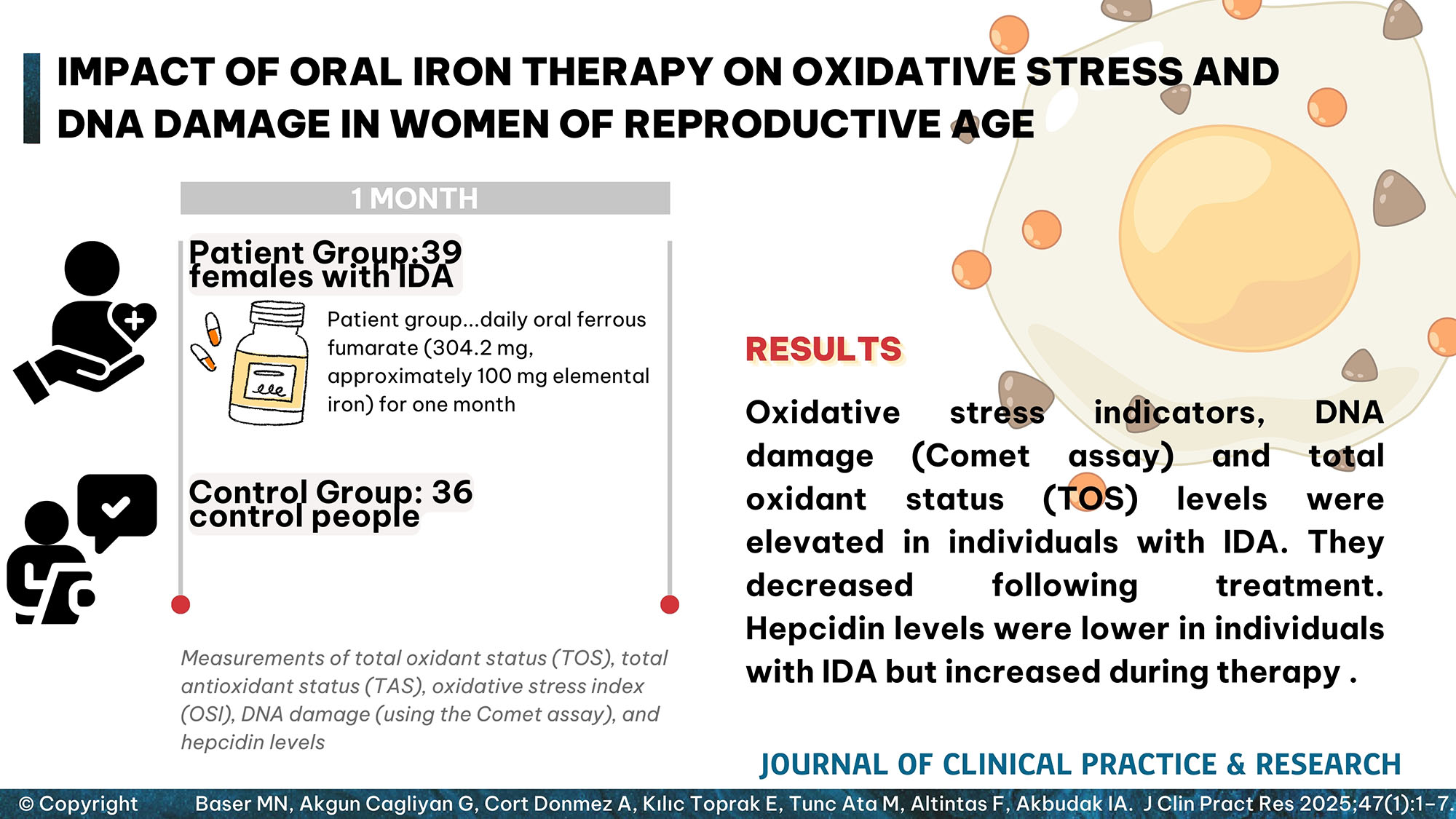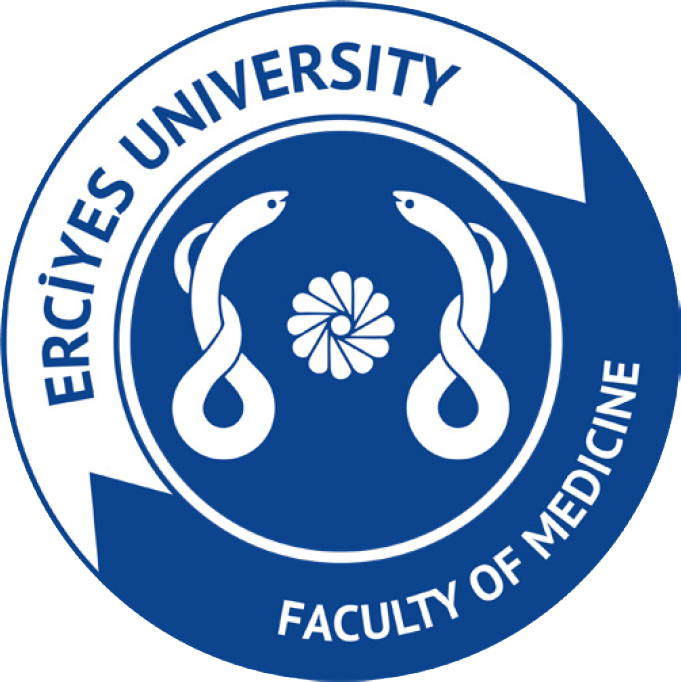2Division of Hematology, Department of Internal Medicine, Pamukkale University Faculty of Medicine, Denizli, Türkiye
3Department of Biochemistry, Pamukkale University Faculty of Medicine, Denizli, Türkiye
4Department of Physiology, Pamukkale University Faculty of Medicine, Denizli, Türkiye
5Division of Intensive Care Medicine, Department of Internal Medicine, Pamukkale University Faculty of Medicine, Denizli, Türkiye
Abstract
Objective: Iron deficiency anemia (IDA) is a condition that increases morbidity and mortality. This study investigated changes in oxidative stress, DNA damage, and hepcidin levels following therapy in individuals with IDA.
Materials and Methods: The patient group consisted of 39 females diagnosed with IDA, and 36 age- and sex-matched controls were incorporated into our study (18-49 years). The patient group was treated with daily oral ferrous fumarate (304.2 mg, approximately 100 mg elemental iron) for one month. Measurements of total oxidant status (TOS), total antioxidant status (TAS), oxidative stress index (OSI), DNA damage (using the Comet assay), and hepcidin levels were conducted before and during therapy and compared between the patient and control groups.
Results: Oxidative stress indicators and DNA damage assessed with the Comet assay were elevated in individuals with IDA (p=0.018) and decreased following treatment (p=0.002). TAS was reduced in individuals with IDA (p=0.02) but increased after treatment (p<0.001). Although TOS levels were elevated in individuals with IDA, the difference was not statistically significant (p=0.10); however, TOS levels decreased after treatment (p=0.02). Hepcidin levels were significantly lower in individuals with IDA (p<0.001) but increased during therapy (p<0.001).
Conclusion: This study demonstrates that just one month of oral iron therapy can reversibly improve oxidative stress and DNA damage. Hepcidin plays a critical role in maintaining iron homeostasis.
Graphical Abstract



